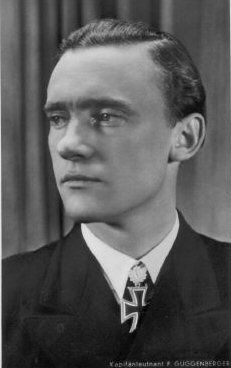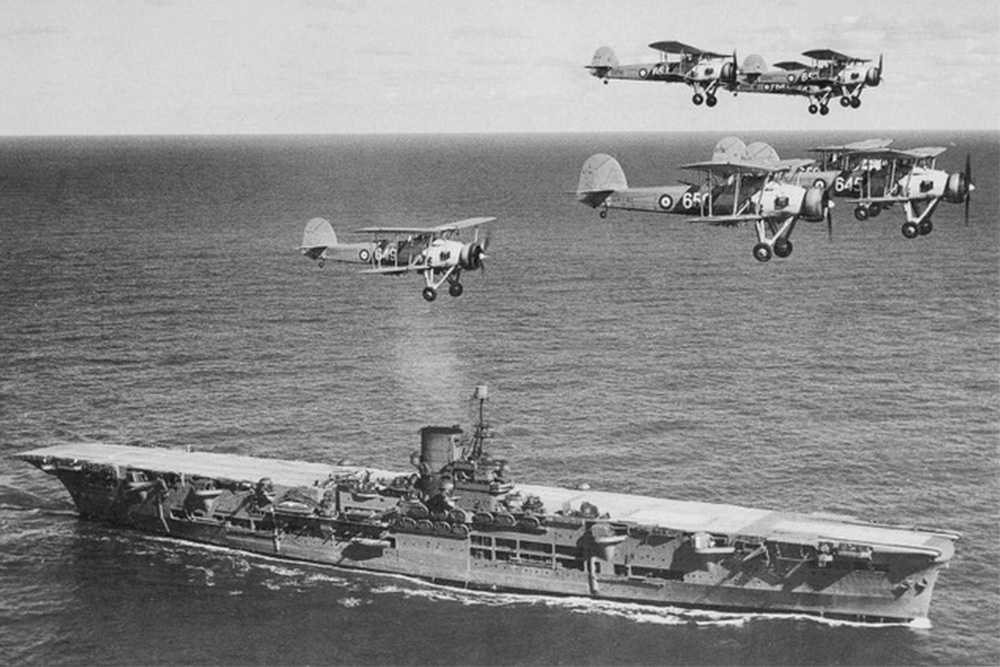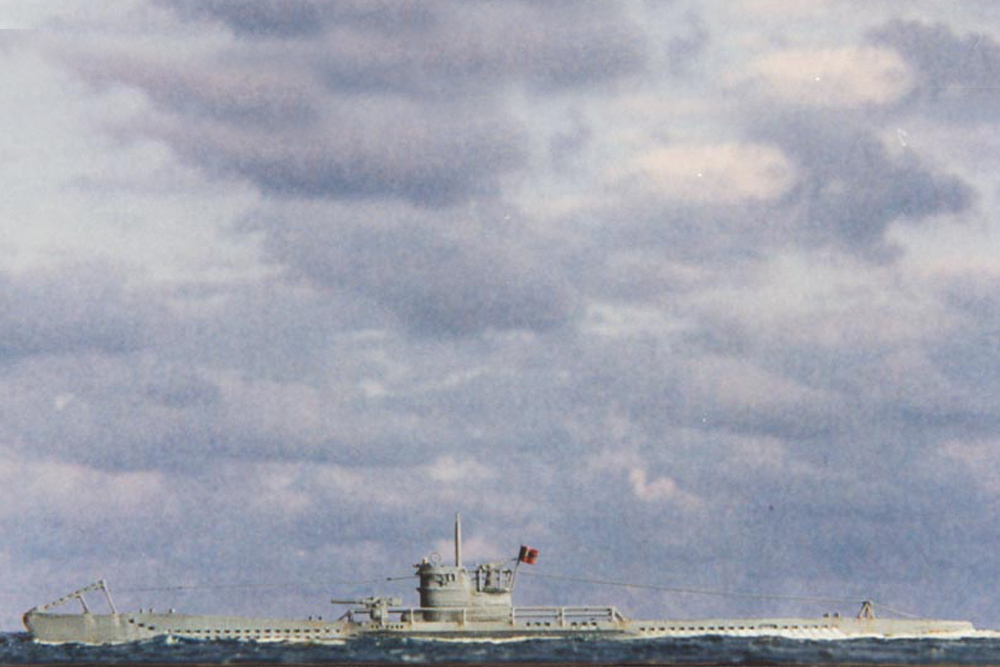Guggenberger, Friedrich ('U-28' 'U-81')
- Date of birth:
- March 6th, 1915 (Munich/Bavaria, Germany)
- Date of death:
- May 13th, 1988 (Erlenbach am Main/Bavaria, Germany)
- Nationality:
- German
Biography
Friedrich Guggenberger joined the German Navy (Kriegsmarine) as a cadet on 26 September 1934. In October 1939, shortly after the outbreak of hostilities, he had himself transferred to the submarine service (U-bootwaffe) as Oberleutnant zur See (Lieutenant). On completing the obligatory training he became watch officer on board U-28 commanded by Günther Kuhnke. After having proven himself sufficiently, he took command of U-28 and was in charge of the vessel until 11 February 1941 as part of a training flotilla.
On 26 April 1941, U-81 was commissioned and allocated to 1. U-boot Flotille (First Submarine Group) stationed at Kiel and Guggenberger became its new commander.
His first three patrols in the North Atlantic remained unsuccessful. On 13 August 1941, aboard U-81, he left Trondheim, Norway en route to the group's new base at Brest in France. On the way there, he successfully intercepted an Allied convoy, sinking two merchantmen, the Empire Springbuck and the Sally Maersk, totaling a meager 9,000 tons. In September 1941 he was promoted to Kapitänleutnant. After an uneventful fifth patrol from Brest, he received orders on 4 November to transfer to the Mediterranean. After having maneuvered his vessel successfully through the Strait of Gibraltar, he surfaced in the night of 11-12 November. He had only just arrived in his patrol area when he was directed towards a group of British warships that had been detected by Italian reconnaissance aircraft. It turned out to be Force H comprising the battle cruiser HMS Malaya and the aircraft carrier HMS Ark Royal.
On 13 November, Guggenberger closed in on the enemy vessels and launched a torpedo on HMS Ark Royal, hitting her on her starboard side near the boiler room. Immediately, the ship started listing heavily but by counter flooding, she was righted again. Damage was so extensive however, that Captain Loben E.H. Maund ordered all hands to abandon ship. At 06.13 the next day, HMS Ark Royal capsized and sank with amazingly, only one crewmember killed.
Guggenberger, after having spent 36 days at sea, arrived at La Spezia, Italy on 10 December 1941. That same day, he was awarded the Knight's Cross of the Iron Cross (Ritterkreuz des Eisernen Kreuzes) for having sunk HMS Ark Royal (22,600 tons). Friedrich Guggenberger made another six patrols in the Mediterranean, being successful various times. In April 1942, he sank, among others, the British tanker Caspia (6,018 tons) and on 10 June 1942, he torpedoed the British navy tanker HMS Brambleaf of 5,917 tons, causing lethal damage to the vessel.
On 5 October 1942 he left La Spezia on his 11th patrol, which was to last six weeks. In this period he sank two British merchantmen, e.g. the Garlinge (2,012 tons) and the Maron (6,487 tons). On 24 November 1942, Guggenberger left La Spezia on his last patrol in U-81, arriving at Pola four weeks later without having had any success.
On 24 December 1942, he passed command of U-81 to Oberleutnant zur See Johann-Otto Krieg and was awarded the Knight's Cross with Oak Leaves (Ritterkreuz mit Eichenlaub) on 8 January 1943. Prior to his appointment to the staff of the Commander of Submarines (Befehlshaber der U-boote) Admiral Karl Dönitz, he was briefly given command over U-847, a Type IX D2 submarine.
On 15 May 1943, he replaced Korvettenkapitän Rolf Rüggebrg as commander of U-513 and on 18 May, left Lorient. His first patrol took him to the Brazilian coast and on the way, torpedoed five vessels, damaging one and sinking four. On 19 July, three days after having torpedoed the American merchantman Richard Caswell of 7,177 tons, his luck ran out. While on the surface, U-513 was detected by an American airplane and sunk. A seriously injured Guggenberger and six others spent a day on a life raft before being picked up by the American destroyer USS Barnegate. After a lengthy stay in the hospital, he was transferred to a POW camp near Phoenix, Arizona in January 1944. He managed to escape on 12 February, together with four other U-boat commanders but was apprehended in Tucson, Arizona with fellow escapee August Maus. In the night of 23-24 December he escaped once more, along with 24 other U-boat crew. On 6 January 1945, some six miles from the Mexican border, he was arrested again, along with his fellow escapee Jürgen Quaet-Faslem.
In August 1946, he was finally released from Allied imprisonment.
After the war, he became an architect and rejoined the German Navy in 1956 and was involved in re-establishing the Bundesmarine. After graduation from the Naval War College in Newport, Connecticut, he was promoted to Konteradmiral (Rear-admiral) and named Chief of Staff AFNORTH (Allied Forces Northern Europe) at NATO headquarters. He ultimately retired October 1972.
On 13 May 1988, he left his home for a walk in the woods but never returned. His body was found two years later.
Do you have more information about this person? Inform us!
- Period:
- Second World War (1939-1945)
- Rank:
- Oberleutnant zur See
- Unit:
- U-28, 2. Unterseebootsflottille, Kriegsmarine
- Awarded on:
- March 23rd, 1940
- Period:
- Second World War (1939-1945)
- Rank:
- Oberleutnant zur See
- Unit:
- U-28, 2. Unterseebootsflottille, Kriegsmarine
- Awarded on:
- July 8th, 1940
- Period:
- Second World War (1939-1945)
- Rank:
- Oberleutnant zur See
- Unit:
- U-28, 2. Unterseebootsflottille, Kriegsmarine
- Awarded on:
- September 19th, 1940
- Period:
- Second World War (1939-1945)
- Rank:
- Käpitanleutnant (Lieutenant)
- Unit:
- U-81, 1. Unterseebootsflottille, Kriegsmarine
- Awarded on:
- November 15th, 1941
- Period:
- Second World War (1939-1945)
- Rank:
- Käpitanleutnant (Lieutenant)
- Unit:
- U-28, 1. Unterseebootsflottille, Kriegsmarine
- Awarded on:
- December 10th, 1941
91st Award.
- Period:
- Second World War (1939-1945)
- Rank:
- Käpitanleutnant (Lieutenant)
- Unit:
- U-81, 29. Unterseebootsflottille, Kriegsmarine
- Awarded on:
- March 10th, 1942
- Period:
- Second World War (1939-1945)
- Rank:
- Käpitanleutnant (Lieutenant)
- Unit:
- U-81, 29. Unterseebootsflottille, Kriegsmarine
- Awarded on:
- January 8th, 1943
“The Best U-Boat Captain in the Mediterranean - Kapitänleutnant Guggenberger awarded the Oakleaves by the Führer:
The Führer has awarded the Oakleaves to the Knight’s Cross of the Iron Cross to Kapitänleutnant Friedrich Guggenberger, captain of a U-Boat. He is the 171st soldier of the German Wehrmacht to be so honoured.
During an attack against a British naval formation in the western Mediterranean Kapitänleutnant Guggenberger sunk the British aircraft carrier ‘Ark Royal’ despite the presence of a powerful enemy defense. Up until then the ship had belonged to the best aircraft carriers in the British fleet. This outstanding success is attributable to Guggenberger’s outstanding abilities, which likewise resulted in the sinking of 5 armed enemy merchant ships (totalling over 30000 GRT) in the course of subsequent operations.
Guggenberger is the best U-Boat captain in the Mediterranean theatre, an excellent leader for his crew and a model for his comrades. Since being awarded the Knight’s Cross he has sunk a number of tankers and freighters (totalling about 30000 GRT), 9 sailing ships and a patrol ship. He also torpedoed a cruiser, a destroyer and an escort ship. He and his crew furthermore distinguished themselves by damaging the power plant in Jaffa via an artillery bombardment.”
171st Award.
- Period:
- Second World War (1939-1945)
- Rank:
- Käpitanleutnant (Lieutenant)
- Unit:
- U-513, 10. Unterseebootsflottille, Kriegsmarine
- Awarded on:
- May 29th, 1943
- Period:
- Second World War (1939-1945)
Sources
- Photo 1: Wilco Vermeer
- - THOMAS, FRANZ & WEGMANN, GüNTER, Die Eichenlaubträger 1940-1945, Biblio-Verlag, 1997.
- Kwasny A., Kwasny G., Die Eichenlaubträger 1940-1945 (CD), Deutsches Wehrkundearchiv, Lage-Waddenhausen, 2001
- Fellgiebel W.P., Elite of the Third Reich, The recipients of the Knight's Cross of the Iron Cross 1939-1945: A Reference, Helion & Company Limited, Solihull, 2003, ISBN 1-874622-46-9
- Kurowski, F., Knight’s Cross Holders of the U-Boat Service, Schiffer Publishing Ltd., 1995, U.S.A.
- Williamson, G., Knight’s Cross and Oak-Leaves Recipients 1941-45, Osprey Publishing Ltd., 2005, Great Britain
- Busch, R., Röll, H-J., , Verlag E.S. Mittler & Sohn GmbH, Hamburg, Berlin, Bonn, Deutschland, 2003
- Feldgrau.com
- uboat.net
- ubootwaffe.net
- lexikon-der-wehrmacht.de
- deutsche-marinesoldaten.de















